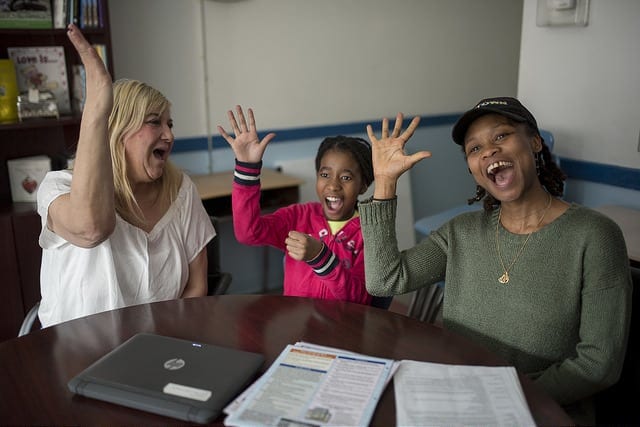STEM programs often approach family engagement in a similar way—with a one-time, end-of-program celebration in which youth show-and-tell STEM projects to their parents. Notably, we ask parents to change their schedules, step out of their familiar routines, and make special arrangements to come to the program’s physical space. As founder and previous CEO of Techbridge Girls, I attended 100+ STEM family nights like this. I witnessed the rewards that come with families making extraordinary effort to show up for STEM showcases. Youth feel pride in presenting their work and parents appreciate learning about the skills behind STEM projects. I also know that these events take considerable time and resources for programs to plan and host and that not all families can participate.
Can we reimagine family engagement? If we did, how might more families benefit and how might impact be longer-lasting? How can we make it more possible for parents to engage where and when they can? Here are three ideas from organizations that don’t ask families to come to programs, but instead support family engagement at home.
1. Flip the traditional roles; let parents learn from their child at home.
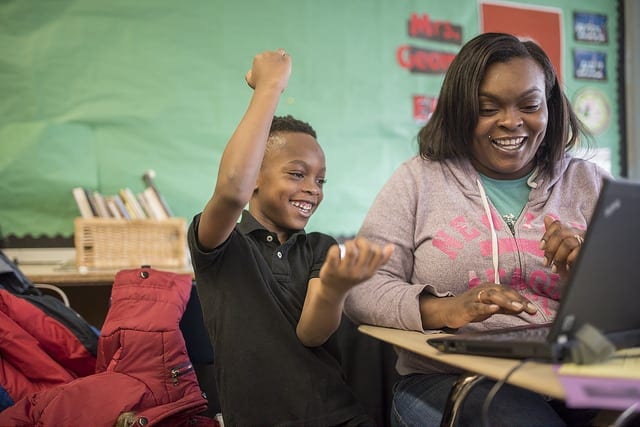
Photo: PowerMyLearning
This approach removes barriers especially for parents who don’t feel confident in their STEM skills. Parents don’t need to know the answers. In fact, they just need to show interest and willingness to learn from their child. PowerMyLearning created the Family Playlists program for youth in grades 3-8. Kids complete activities at school and teach what they learned to a “family partner” who may be a parent or other significant adult. Afterwards, family partners provide feedback to teachers on how confident their child was teaching the material. This Playlists program replicates elements of the Johns Hopkins University’s “Teachers Involve Parents in Schoolwork” program. Family Playlists are available on PowerMyLearning Connect: School Edition.
PowerMyLearning CEO and Co-Founder, Elisabeth Stock, shares, “The first step is brilliant because, as the old adage goes, ‘the best way to understand a concept is to explain it to someone else.’” In addition, teachers receive helpful feedback from parents and guardians.
Results for Family Playlists have been positive. Participation has been extremely high: 91% of families at one of PowerMyLearning’s partner schools in New York City participated in Family Playlists and 84% of participating families submitted personal feedback to their child’s teacher. Students improved in math proficiency and 95% of parents in partner schools became more confident that they could help their child learn. You can see the power of this program in a personal testimonial from one of the youth.
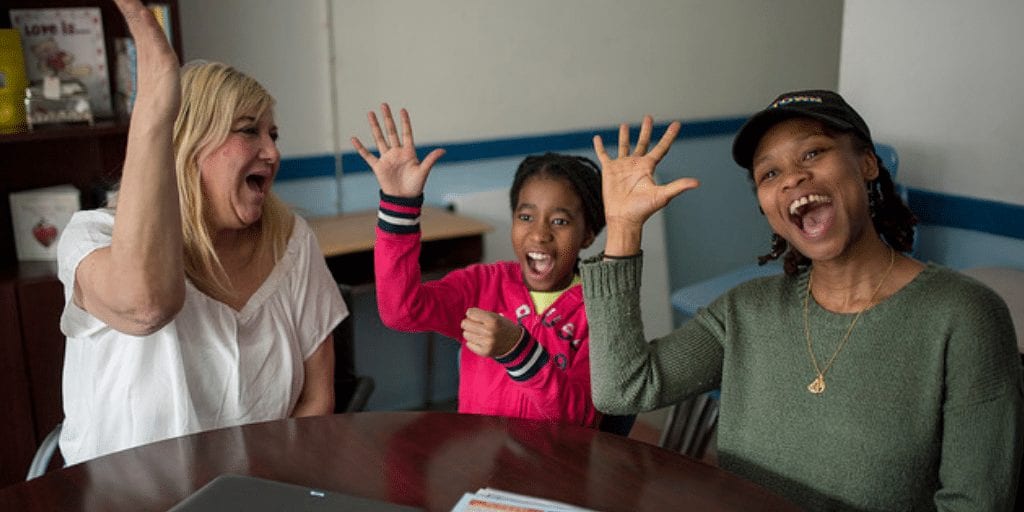
Photo: PowerMyLearning
While Family Playlists were developed to help families and classroom teachers partner more effectively and support student learning in school, we see great promise for the model in afterschool STEM programs. How might you adapt Family Playlists for your afterschool program? With input from youth, you could select a STEM activity or design challenge that they mastered in an afterschool program and want to teach their parents. In advance, you could give youth a chance to practice teaching the activity and getting feedback from peers. Then, you could send them home with the “assignment” to teach their family partner. Parents could be invited to send back feedback on what they learned about their child and about STEM. You could also take the opportunity to ask parents about the kinds of resources that would help them continue STEM learning at home.
2. Looking for ways to support families beyond the school day and outside of afterschool or summer programs? Share Bedtime Math.
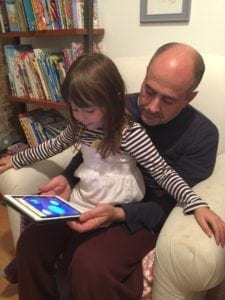
Photo: Bedtime Math
This program was designed to instill a love of math by Laura Bilodeau Overdeck, Founder and President of Bedtime Math Foundation, and Chair of the Overdeck Family Foundation. The program offers math challenges for families with kids ages 3-9. These challenges can be completed in just 5 minutes and fit into busy schedules and nighttime routines. Parents can sign up for the nightly email, download the free app, or read one from their best-selling children’s books. While marketed for bedtime, any time of day can work. And, it’s good to know that challenges are available in English and Spanish and answers are provided.
Research about the program documents its benefits for kids and parents alike. A study published in Science shows Bedtime Math helps kids do better in math. As little as once a week with Bedtime Math improves kids’ math skills by 3 months. For kids whose parents have math anxiety the results are even more positive–gains of half a school year. The program boosts parents’ confidence and helps overcome their own fear of math, thereby empowering them to engage in math activities with their child. And best of all, Bedtime Math creates a routine for family engagement. “We’ve seen that any adult can become a playful math guide when given the right content,” shares Overdeck.
We encourage you to do more than tell parents about the program. Communicate to parents the importance of introducing math early on and empower them so that they can do it. Share examples of the activities from Bedtime Math and show parents how to sign up so that they can see how fun and easy the program is. The Bedtime Math team has found that by giving parents a chance to see and try the app they realize, “It’s not scary. I can do that.” The team also found how important it is that someone parents trust introduces Bedtime Math.
3. Send STEM activities home.

Photo: Math in the Mail
Math in the Mail gives parents and caregivers resources to support early math at home. Math in the Mail is a collaboration among the five intermediate school districts in the Great Lakes Bay Region, funded by the Dow Corning Foundation. This program delivers kits to the homes of low-income youth. Each kit includes materials and instructions for age-appropriate, hands-on math activities and provides ideas for extension activities using items readily found at home. Math in the Mail also provides a ‘Tools for Talking’ guide to help parents and caregivers understand how to use the materials and talk with their child.
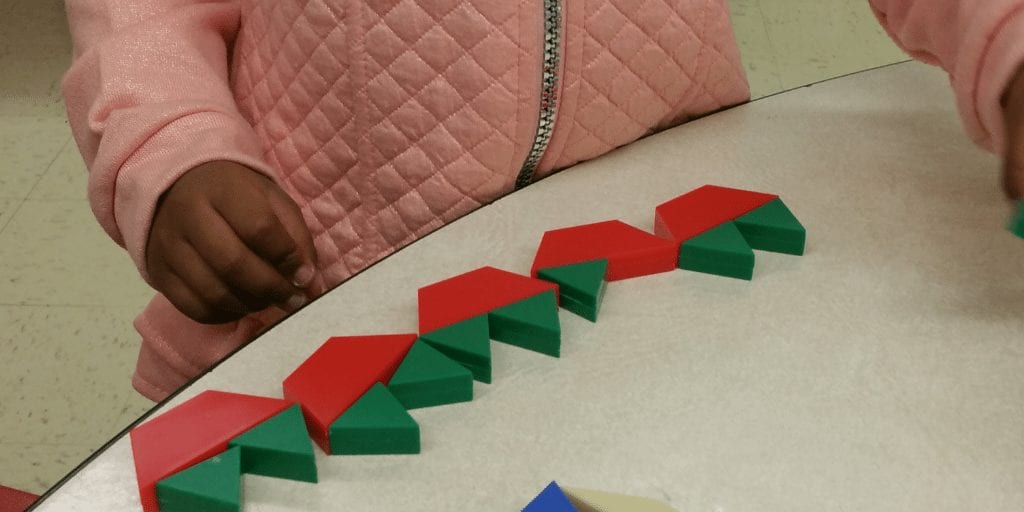
Photo: Math in the Mail
Results have been positive. Parents appreciate that the kits are easy to use and that their child is enthusiastic about engaging with them. Most parents shared that they did not do math-related activities outside of counting with their children prior to receiving the Math in the Mail kits. The kits prompted them to increase the time they spend engaging their children in math content. When asked whether their perception of math changed after having used the Math in the Mail kits, one parent responded, “It showed me different ways to introduce math to him instead of only looking at numbers. It helps me in other places like asking him how many trees do you see? Or how many zebras do you see, when we are at the zoo.” With Math in the Mail, parents discovered a new positive mindset and that they could incorporate math into new places and spaces. Another parent shared, “I didn’t really do math with my child before, and it has helped me understand where I can see math in more places.” The kits help parents discover new ways to incorporate math into their children’s daily routines. Teachers report that there was positive difference in the mathematics skills and knowledge of students.
In addition to mailing kits home, Math in the Mail also hands out kits to parents at preschool programs. For families who are transient, this is a more effective delivery method. While free for families who qualify, the program has grown so popular that it also offers a subscription option for families who wish to engage but don’t qualify for the grant-funded program.
We hope you are inspired by these three programs that are expanding access to STEM by bringing STEM home to families in creative ways. We encourage you to talk with families in your community to learn how to support them at home. Share your discoveries with STEM Next Opportunity Fund. Together we can show how families matter and make STEM accessible and inviting to all youth.


